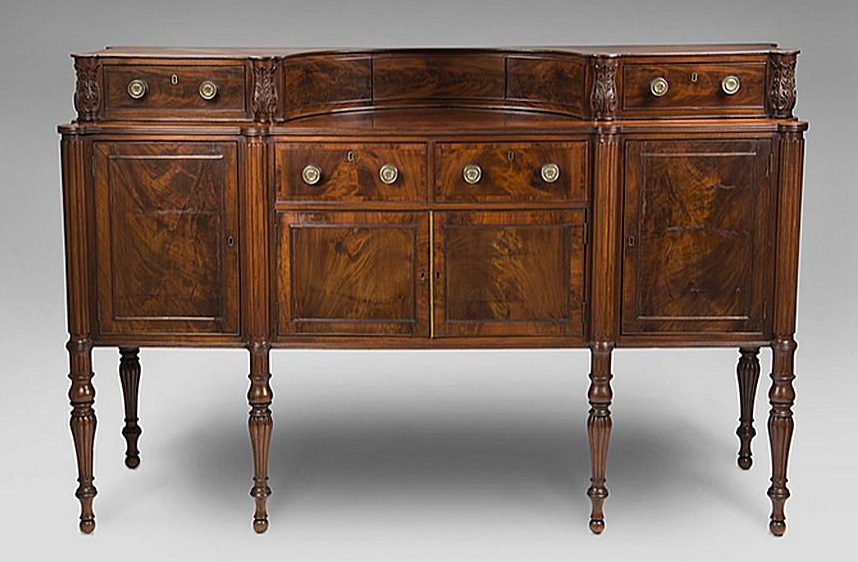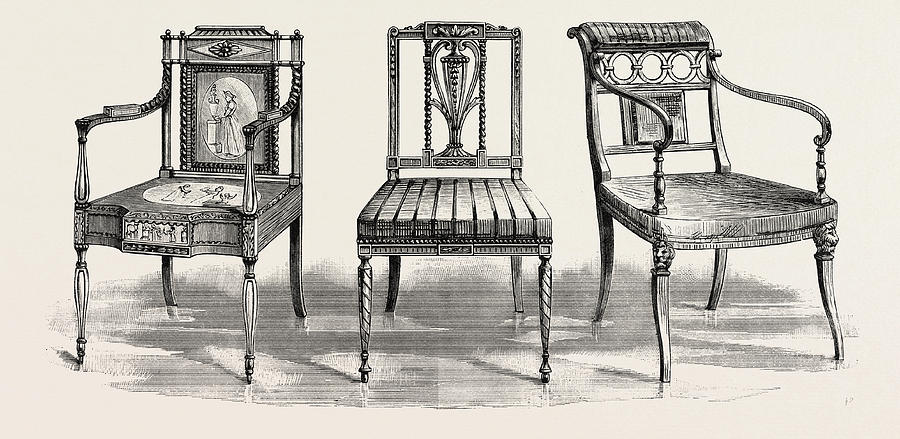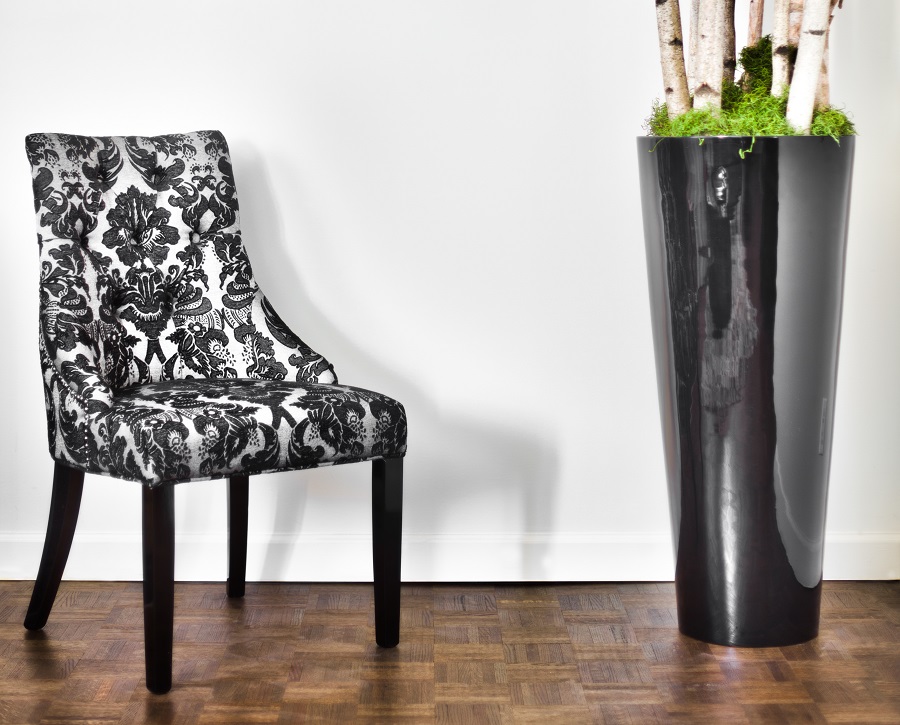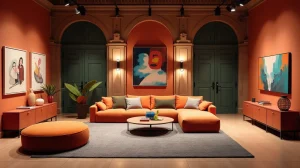Discussing an antique piece of furniture and trying to find the representative elements of that style took me back to the wonderful world of antiques. It's a field that fascinates me, and the articles written in the Styles in furniture have been a great pleasure. The world of wood is so vast and full of interesting topics that it has been a while since the last addition to the series. But now, after many days of old furniture taking up much of my time, it's time to add to the famous styles with a name that has brought delicate, understated elegance to furniture design, Thomas Sheraton.

Who was Thomas Sheraton
Alongside Thomas Chippendale and George Heppelwhite, Thomas Sheraton forms the golden trio of 18th-century British furniture design, the men who introduced neoclassicism to the field. Unlike them, Sheraton is known more for his published books and less for the furniture he created. To date only one piece of furniture is known to be attributed to him - a bookcase, one of the drawers stamped with the initials T.S.
Thomas Sheraton was self-taught. He didn't go to school, but he had a natural talent for drawing, at one point even teaching drawing lessons to support himself. He was supposedly apprenticed to a cabinetmaker of the time, hence his passion for furniture. He was a very technical person with a good sense of proportion. He became famous after the publication in 1791-1792 of The Cabinet-Maker and Upholsterer's Drawing-Book (The Cabinetmaker's and Upholsterer's Sketch-book), four volumes of sketches which also contained very precise technical instructions on execution. The volumes spread rapidly throughout Great Britain and then, through settlers, to the United States.
In 1803 he publishes The Cabinet Dictionary (Dictionary of Furniture), a book that was intended as a dictionary of terms used in furniture production. It was not appreciated, however, as it was considered to be a mixture of heterogeneous and even antagonistic terms. In 1805 the publication of an encyclopaedia of furniture and upholstery artists (The Cabinet Maker, Upholsterer and General Artist's Encyclopaedia) which was to comprise several volumes. Unfortunately he only managed to publish the first volume, illness and death halting the project.
The style proposed by Sheraton in his books was neoclassical, that is, a refined and simple style that rejected the ornate ornamentalism of earlier styles. It is a style based on the revival of Greek and Roman aesthetics, on the mathematical harmony of form, the grace of proportion and simple, unadorned geometry.

What's specific to the Sheraton style
Sheraton furniture embraces neoclassical simplicity, giving a lighter and more elegant visual feel. The shapes are rectilinear, the backs of sofas and chairs are rectangular, the legs are straight, slender and delicate like a ballerina's. Unlike Chippendale, the leg man cabriole or by Heppelwhite, who favored square ones, the legs of Sheraton chairs are straight, often tapered, rounded and with machining reminiscent of Greek columns. Sometimes the legs are attached to the base with equally delicate elements that stiffen the whole system.
Sofa legs are straight, with the top uncovered by upholstery and arms that descend slightly from the backrest, making the backrest and armrest one piece. Armchairs have the same way of joining the arms to the backrest. The legs of heavy pieces of furniture, although more solid, are just as delicate. Mahogany wood, predominant in other neoclassical styles, is sometimes replaced by maple, rosewood, ash, birch or mahogany. Sheraton-style furniture is inlaid and inlaid, often using several contrasting wood species. Brass is used to make the beading, for the plates around keyholes or lion's head handles on drawers. Specific decorations are the lyre, the urn, rosettes, knotted ribbons, columns and lion's heads. The carvings are smaller, with low relief. Also specific to the style is the use of silk behind glass in cupboards or bookcases. He enriched the furniture with drawings and paintings.
Sheraton was also an innovator in furniture design. His furniture, despite its delicacy and simplicity, is multi-functional with mechanisms that operate, for example, hidden worktops in the cupboard or make the desk more functional. Hidden compartments or drawers that allow access to other drawers are also features. The aesthetics of the furniture are provided by the combination of contrasting veneers forming complex patterns, inlaid brass or black lacquer coating, an influence of Japanese style.
Features also found in contemporary styles
Although they did not bring him wealth, Sheraton's designs quickly found their way to many ebeniers who produced furniture with specific characteristics. Toward the end of the century, the designs also began to be mass-produced, their elegant simplicity much appreciated. Sheraton was the most copied style in the USA in the second half of the 19th century and even later. In Europe, it influenced many European cabinet makers, who over the years produced true works of art.

The classic Sheraton sofa with its straight back and delicate legs, emblematic of this style, has become a source of inspiration for contemporary designers. Not infrequently, the Scandinavian style, with its round, tapered legs and simple geometry, reminds me of the old neoclassical style, which, by eliminating opulence, has become elegant and timeless.
If you want to discover other classic furniture styles, check out the series Styles in furniture. And if you have any questions or want to discuss other styles, write below in the comments. I will definitely reply.
Cover photo source: themsv.org


































Add comment